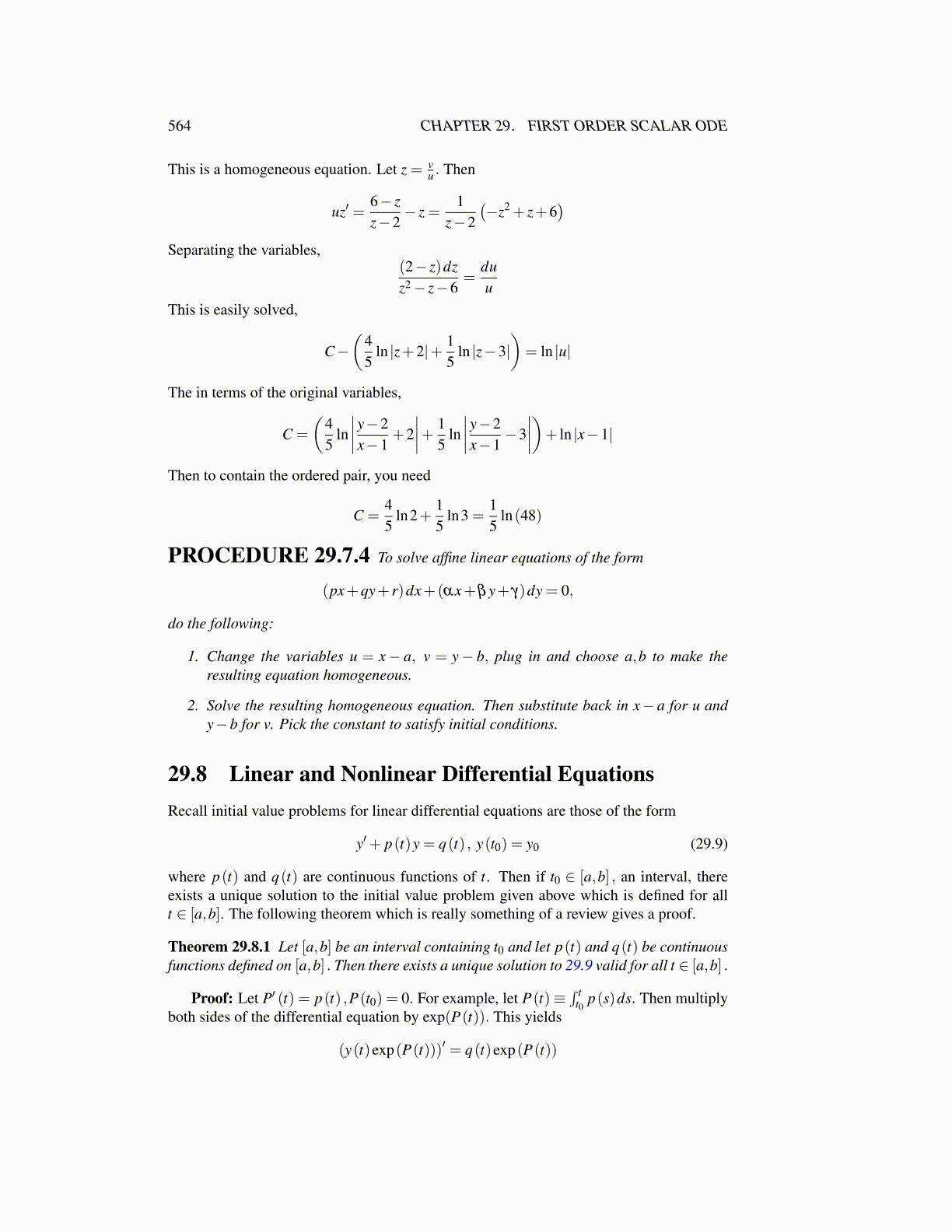
564 CHAPTER 29. FIRST ORDER SCALAR ODE
This is a homogeneous equation. Let z = vu . Then
uz′ =6− zz−2
− z =1
z−2(−z2 + z+6
)Separating the variables,
(2− z)dzz2− z−6
=duu
This is easily solved,
C−(
45
ln |z+2|+ 15
ln |z−3|)= ln |u|
The in terms of the original variables,
C =
(45
ln∣∣∣∣y−2x−1
+2∣∣∣∣+ 1
5ln∣∣∣∣y−2x−1
−3∣∣∣∣)+ ln |x−1|
Then to contain the ordered pair, you need
C =45
ln2+15
ln3 =15
ln(48)
PROCEDURE 29.7.4 To solve affine linear equations of the form
(px+qy+ r)dx+(αx+βy+ γ)dy = 0,
do the following:
1. Change the variables u = x− a, v = y− b, plug in and choose a,b to make theresulting equation homogeneous.
2. Solve the resulting homogeneous equation. Then substitute back in x− a for u andy−b for v. Pick the constant to satisfy initial conditions.
29.8 Linear and Nonlinear Differential EquationsRecall initial value problems for linear differential equations are those of the form
y′+ p(t)y = q(t) , y(t0) = y0 (29.9)
where p(t) and q(t) are continuous functions of t. Then if t0 ∈ [a,b] , an interval, thereexists a unique solution to the initial value problem given above which is defined for allt ∈ [a,b]. The following theorem which is really something of a review gives a proof.
Theorem 29.8.1 Let [a,b] be an interval containing t0 and let p(t) and q(t) be continuousfunctions defined on [a,b] . Then there exists a unique solution to 29.9 valid for all t ∈ [a,b] .
Proof: Let P′ (t) = p(t) ,P(t0) = 0. For example, let P(t)≡∫ t
t0 p(s)ds. Then multiplyboth sides of the differential equation by exp(P(t)). This yields
(y(t)exp(P(t)))′ = q(t)exp(P(t))